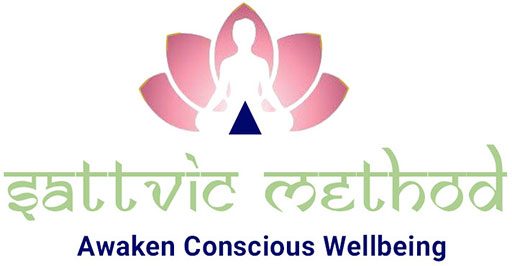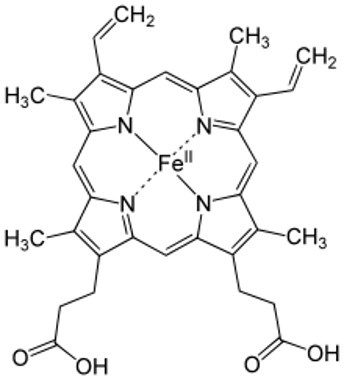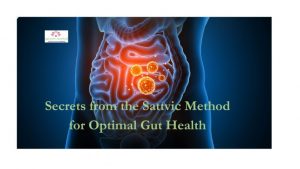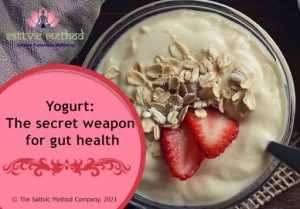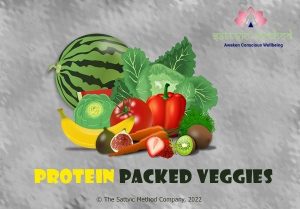A friend who was diagnosed with anemia inquired, “What sattvic foods are rich in iron? Can I maintain a balanced diet with iron-rich sattvic foods? How to ensure that I do not become anemic again?”
Anemia is a condition where our blood is low in iron. The red color of our blood comes from iron, heme, which is wrapped up in the protein called hemoglobin (he-mo-glo-bin). Iron is central to creating this complex protein molecule. Hemoglobin has 70% of our body’s iron. It is also storing in muscle tissue as myoglobin.
Iron is also stored in our body as ferritin, which circulates in the blood. Every day an adult needs about 1.8 milligrams of iron daily. No matter how much iron we eat, no more than 30% of iron is absorbed by the body. Adult male stores about 1,000 milligrams of iron, adult females have only 300 milligrams of iron stored in the body. Women, generally, need to replenish iron more frequently because they can store less iron than men.
When iron becomes low, it shows up as iron depletion. If un-treated, depletion leads to iron deficiency. The last stage of this deficiency leads to anemia. Hemoglobin levels in the blood show up as deficiency such as anemia. Long term anemia can cause serious health issues. This includes a combination of several conditions such as fatigue, hair loss, chest pain, hormonal imbalance, heavier menstrual flow, shortness of breath, and lightheadedness. When iron goes low, especially during pregnancy, women experience strong unusual craving for ice, chalk, dirt or clay; nutritional deficiencies; palpitations of the heart, or chronic infections.
Sources of iron in the sattvic diet
Although iron is available in meat, the focus of this blog is on vegetarian sources. From the perspective of the sattvic diet, several foods we eat daily are rich in iron. Legumes, grains, nuts and seeds, vegetables, and jaggery are good sources of iron. Learn more about lentils here. The table below gives more details about the sattvic sources of iron to include in the diet.
| Sources | Examples |
| Legumes | Chickpeas, lentils, soya beans, lima beans, black beans |
| Vegetables | Spinach, collard greens, swiss chard, tomato |
| Fruits | Apricots, raisins, dates, prune |
| Grains | Brown rice, quinoa, oats, amaranth, spelt, finger millet |
| Nuts | Cashews, pistachio, pine |
| Seeds | Pumpkin, squash, sunflower, sesame |
| Other | Black strap molasses, palm jaggery, coconut milk |
Recipes
Iron from plant sources is best absorbed in acidic medium. Many sattvic recipes use tamarind or lime juice making foods acidic. Foods cooked using sattvic recipe help slow absorption of iron. Ascorbic acid also helps in absorption of iron. You can increase the amount of iron in your food by cooking in cast iron pots. In some countries, they add a piece of iron when you are cooking.
If you have extreme anemia, please consult a doctor and take additional supplements. Iron supplements work best with some food in acidic environments. Take your supplement with lemonade or after the meal. There are several vegan iron supplements available in the market. Feel free to reach out to me in person if you need any recommendations.
Here are some sattvic recipes that help you increase your iron intake.
Turmeric rice: https://youtu.be/V9_X-mm10XY
Sattvic Horsegram Soup https://youtu.be/usd_80yp4T0
Pulikachal: https://youtu.be/X3LPEjFwJBo
Stuffed Bell Pepper: https://youtu.be/9hxvPVVd8hs
Bell pepper chutney: https://livingsattva.com/sattvic-recipes/bell-pepper-chutney/
Quinoa Soup: https://livingsattva.com/sattvic-recipes/quinoa-soup/
Ragi Kanji: https://livingsattva.com/sattvic-recipes/ragi-kanji/
Date-Tamarind Chutney: https://livingsattva.com/sattvic-recipes/date-tamarind-chutney/
Brinjal Sambar: https://youtu.be/wyqNKz74tzU
Meal plan
One of the highlights of a sattvic diet is not getting into the habit of eating three or four times a day. Learn more about the fasting and feasting when following a sattvic lifestyle . Here are some tips to stocking a sattvic pantry. Eat fresh cooked food daily. More information about sattvic food is here.
Some simple meal plan for increasing iron could be as follows:
Chewing the food well is essential for avoiding putting on weight. Eat dinner at least 3 hours before you sleep and add some physical activity such as slow walk after dinner. These actions help you to digest food well and reduce discomfort, bloating, and other digestive issues. A sattvic diet can help you maintain high iron content in your body. If you have any questions about sattvic diet, feel free to comment below. Thank you!
References:
Biochemistry, Iron Absorption https://www.ncbi.nlm.nih.gov/books/NBK448204/ Enhancers of iron absorption: https://www.ncbi.nlm.nih.gov/pubmed/15743017
